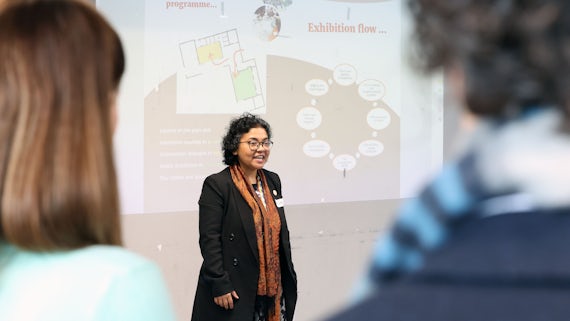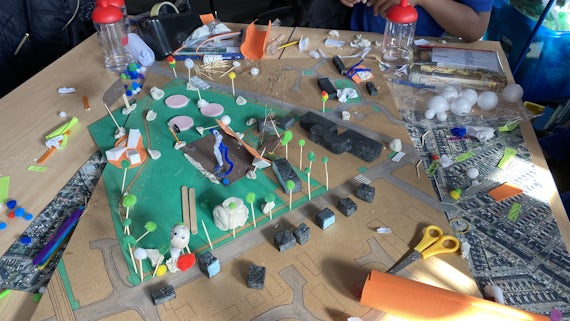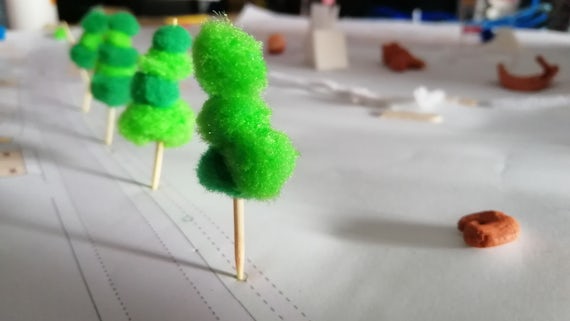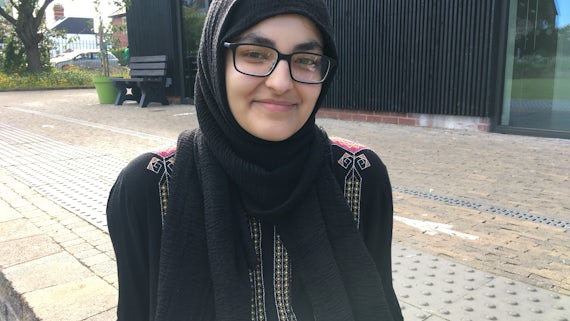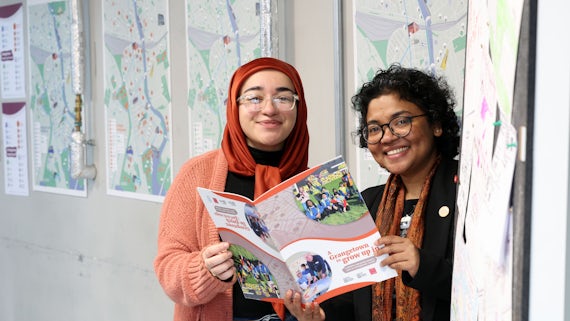Young people say what they want for the place where they live
14 February 2023

A vision for a better Grangetown has been launched by young people as part of a Cardiff University project.
Children and teenagers aged eight to 18 outlined the improvements they would like for their neighbourhood in their report, A Grangetown to Grow Up In.
Reflecting on what they would like to see prioritised, the group are calling for more inclusive play facilities that cater for children with disabilities, as well as dedicated spaces for young women to meet and play.
The plan was launched at Grange Pavilion, where children and young people presented their conclusions to Cardiff Council and community group leaders to consider how they could work towards implementing the proposals.
Last year, a series of workshops were held, giving children and young people in Grangetown the chance to highlight what they liked about living there and what they would like to see improved, following the challenges they experienced from the pandemic.
According to the young people, other urgent areas for action include:
- More recycling bins for different kinds of waste.
- Initiatives to improve our neighbourhood, parks and playgrounds with more seating areas, lighting and greenery.
- Better mental health support for children and young people.
- Shelter for homeless people.
- Safe roads and streets.
Eleeza Khan, 16, who was part of the project, said: “Working on the project was a brilliant way to get involved in my community and voice my concerns as well as the concerns of those around me.
“It was a great way of learning about the different areas and spaces in Grangetown and what is already being done to improve them. Moving on from the planning, I would now like to see these ideas implemented and the children of Grangetown’s voices heard. I look forward to a more child-friendly environment to live in.”
Fitzalan High School, Ninian Park Primary School, Grangetown Primary School and Ysgol Hamadryad participated in the workshops.
Building on the success of the University’s Community Gateway project, the initiative includes a number of partners, including Grange Pavilion and Grange Pavilion Youth Forum, as well as the Child Friendly Cardiff Team at Cardiff Council.
Cardiff Council’s Deputy Leader and Cabinet Member for Education, Employment and Skills, Councillor Sarah Merry said: “Cardiff is edging closer to realising its ambition of becoming a UNICEF UK national Child Friendly City, which places children and young people at its heart and where their rights are respected by all.
“A Grangetown to Grow Up In project is a prime example of how the council’s child friendly ethos is shared with partners across Cardiff and how through partnership working, we are all creating a city where children and young people can share their voice and have an input on the decisions being made that will affect them.
“This will ensure that Cardiff is a great place to live and grow up in.”
Project Lead Dr Matluba Khan, based at the University’s School of Geography and Planning said: “Children and young people in Grangetown should be proud of what they have achieved. Their views are integral to this vision of a better Grangetown, one which is inclusive for all."

Their work shows that people of all ages have a role to play in improving the area where they live.
Co-Director of MA Urban Design
Other academics who have been involved include Dr Tom Smith and Dr Neil Harris, also from the School of Geography and Planning and Professor Mhairi McVicar from the Welsh School of Architecture.
Architecture graduate and local resident Shoruk Nekeb has worked closely with the young people as a community engagement assistant.
She said: “In the past few months I’ve been lucky to work with the children and young people of Grangetown. It’s been nice to go into my old high school to carry out workshops in the places I grew up and relate to some of the experiences the young people are still having a few years later.
“This project allowed for all the gathered data to be mapped out on a map and presented back to many important stakeholders in the city. This project meant a lot to me as we really wanted to get some tangible results from this research. I’d love to see this model all over the city and actions being put in place for the future generations.”
Share this story
Find out more about the work we do and the communities it helps.
